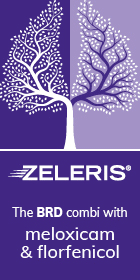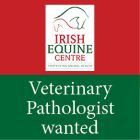A new approach to mastitis control
Michelle McGrath BAgrSc, MAnSci, MVB, Dip.SFP and Alison Burrell MSc., C.Psychol., Ps.S.I write about the introduction of a new TASAH-funded CellCheck consult to be delivered during lactation, called ‘Cell Count Solutions’
CellCheck is the national mastitis control programme, coordinated and facilitated by Animal Health Ireland. It was developed, and is delivered in partnership with industry bodies representing farmers, processors, service providers and government since 2011. While the principles and science of mastitis control have not changed, CellCheck aims to use this science in a new way. CellCheck has created the environment and the opportunity for the dairy industry to identify and agree on common industry goals.
These goals include having 80 per cent of milk supplied with a somatic cell count (SCC) of 200,000 cells/ml or less by 2025, to have 90 per cent of herds milk recording by 2025 and to dramatically improve recording of both in-lactation and dry cow treatments online. On the path to achieving these goals, CellCheck provides agreed, clear and consistent guidelines around mastitis control. The CellCheck programme incorporates a process of continual evaluation, to ensure that it is achieving the outcomes required by dairy farmers and the industry. CellCheck collects anonymised bulk tank SCC data from all the milk processors in Ireland to monitor trends in SCC over time.
As part of the Rural Development Plan 2014-2022, the Department of Agriculture, Food and the Marine (DAFM), in conjunction with the EU, continues to fund a Targeted Advisory Service on Animal Health (TASAH) for farmers, delivered by trained private veterinary practitioners (PVPs). Only PVPs who have been trained by AHI in relation to each disease will be eligible to provide the service and to be paid by Animal Health Ireland on behalf of DAFM for its delivery.
Training events for PVPs
To support the move towards selective dry cow strategies, Animal Health Ireland has been running training events for PVPs and facilitating the delivery of CellCheck Dry Cow consults to eligible farms since 2018. Following the positive feedback from farmers that have participated in CellCheck Dry Cow consults, CellCheck has developed a new consult to help farmers that are having difficulty in
managing mastitis and SCC levels on their farm. 2022 saw the introduction of a new TASAH-funded CellCheck consult to be delivered during lactation, called ‘Cell Count Solutions’.
This new consult aims to address the economic and health impact of underlying mastitis issues during the year, as well as to mitigate the risk associated at drying off with implementing selective dry cow therapy. For nominated PVPs, this new consult is an opportunity to be involved in the process of mastitis problem-solving and highlights the role of the veterinary practitioner in routine herd health planning. Furthermore, it is also intended to act as a potential catalyst for ongoing multi-disciplinary engagement.
As mastitis is a multifactorial problem, it requires a multidisciplinary approach. Although TASAH-funded consults are PVP-led, one aim of the consult is to identify any other actors that farmers seek help and advice from, and kick-start a collaborative approach to addressing mastitis. For this reason, Cell Count Solutions training is delivered to PVPs, Teagasc and private farm advisors, milk quality advisors and milking machine technicians. Previous research has found that successfully using a farmer-led, multi-actor farm health team improves herd health management and engagement with consult recommendations (DISARM project, 2022).
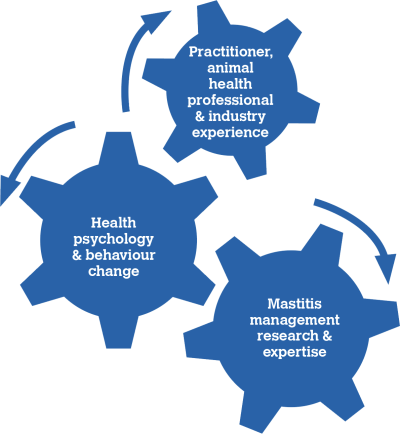
Figure 1. Multidisciplinary approach to training and consult development.
A multidisciplinary approach
Reflecting this, the Cell Count Solutions training and consult were designed with a multidisciplinary approach in mind (Figure 1). The content and structure draws on the latest empirical evidence, expertise of the CellCheck Technical Working Group of researchers and practitioners working in the area of mastitis management, industry experience, and psychological theory and practice relating to communication (Regan & Burrell, 2021) and behaviour change techniques (Gribben & Burrell, 2023). It aims to provide participants with the tools required to carry out an assessment and formulation of the cow, her environment, the milking machine and the milking routine, while taking into consideration the individual motivations, concerns and priorities of the farmer.
The Cell Count Solutions training programme takes a blended learning approach to teaching and training in accordance with Bloom’s Taxonomy (Figure 2) to support participants to understand and remember technical content through self-paced eLearning online modules (Stage 1) followed by an in-person training event (Stage 2).
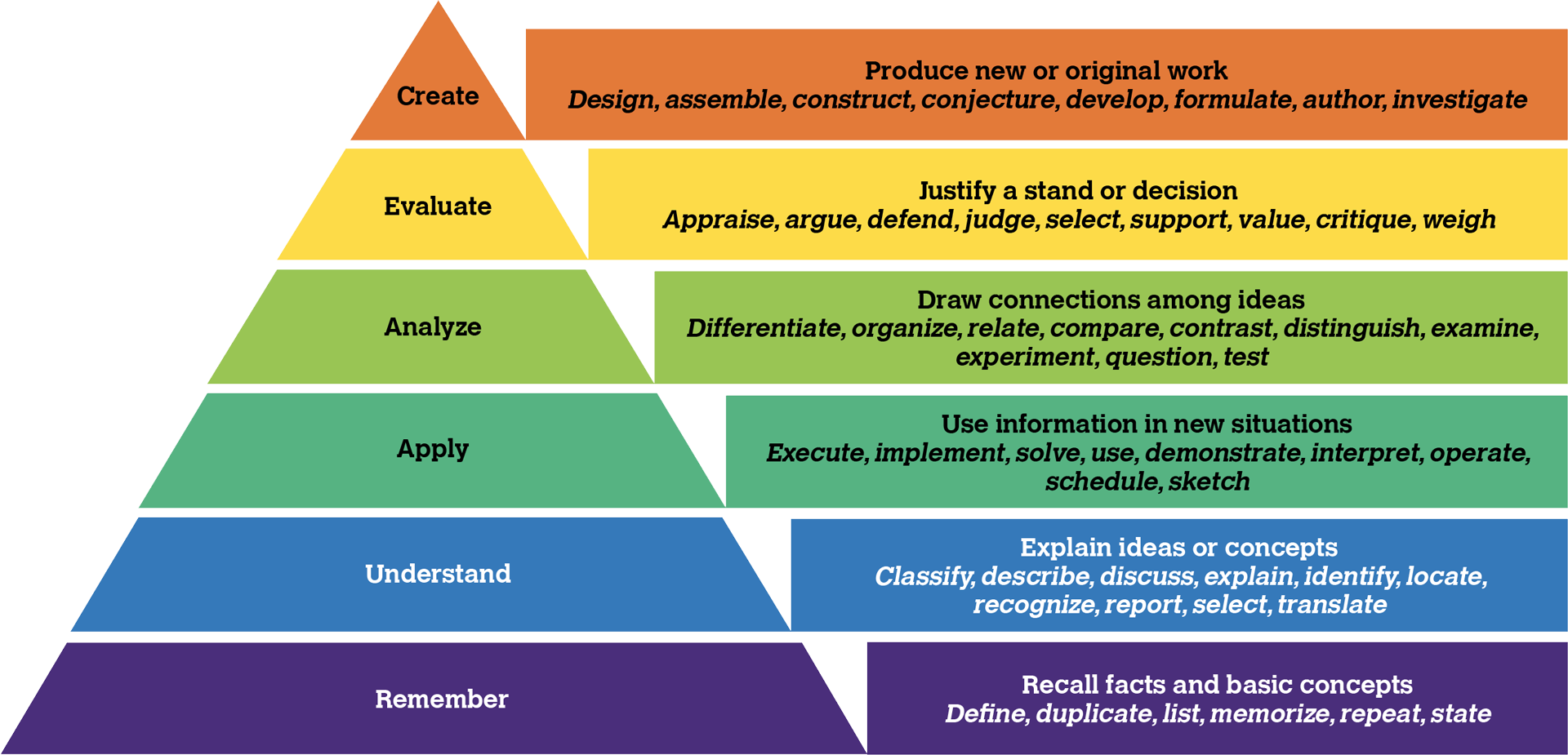
Figure 2. Bloom’s Taxonomy Pyramid. Bloom, B.S. (1956) Taxonomy of Educational Objectives, Handbook: The Cognitive Domain. David McKay, New York. Source for graphic: Armstrong, P. (2010). Bloom’s Taxonomy. Vanderbilt University Center for Teaching. Retrieved [20/4/23] from: https://cft.vanderbilt.edu/guides-sub-pages/blooms-taxonomy/
Cell Count Solution training
There are five online modules in the Stage 1 training of Cell Count Solutions which is available to all service providers to ensure consistency of messaging to support mastitis control, promote the TASAH service, and provide follow-up support.
Module 1 covers how to evaluate and assess the cow’s environment and how it may be contributing to mastitis. It highlights the key areas that need to be considered including the dry cow housing, calving area and collecting yards or roadways. As the impact of housing on mastitis and SCC may be retrospective, this module helps identify patterns of spread and linkage between these areas and mastitis.
Module 2 assesses the milking routine and highlights the components of a good milking routine and technique, including cow flow, cow preparation, cluster attachment/removal, importance of teat spraying, and how the milking routine has the ability to increase or decrease the risk of mastitis.
Module 3 identifies the records and samples necessary to collect when completing a herd investigation. It describes how the CellCheck Dashboard works and how it is a useful tool, along with milk recording reports, to identify trends and problem cows contributing to poor mastitis control that require further investigation. This module also gives an excellent guide on how to interpret milk culture reports and what they mean.
Module 4 describes how to carry out teat scoring and explains how to interpret a milking machine report to help us understand the issues that may contribute to poor teat condition and mastitis. Following feedback from this module, additional training on milking machine function, and its interaction with the cow is planned for June 2023.
Finally, Module 5 focuses on embedding behaviour change techniques into herd health consults. It introduces learners to the basic principles of behaviour change theory and motivational interviewing. It draws on research highlighting the importance of exploring internal motivations of clients, rather than relying solely on top-down regulatory, or financial reasons for change. Research has found that practitioners most commonly refer to economic justifications for making changes to farm routine, when, in fact, this alone rarely leads to meaningful and sustained change. In fact, professional identity, personal values, ethical and moral considerations, veterinary advice and peer support also contribute heavily to farmers’ decision-making (Rehear, Barrett & Tisdall, 2017). The module provides learners with an insight into communication techniques shown to elicit clients’ internal motivations for change and create a collaborative working relationship between client and practitioner (Bard et al, 2019).
The Stage 2 training is in-person. Its purpose is to apply Stage 1 learning to analyse, evaluate and create consults and recommendations through scenario-based learning and working through case studies in multidisciplinary group work. PVPs must complete both Stage 1 and 2 to be eligible to deliver TASAH-funded Cell Count Solutions consults.
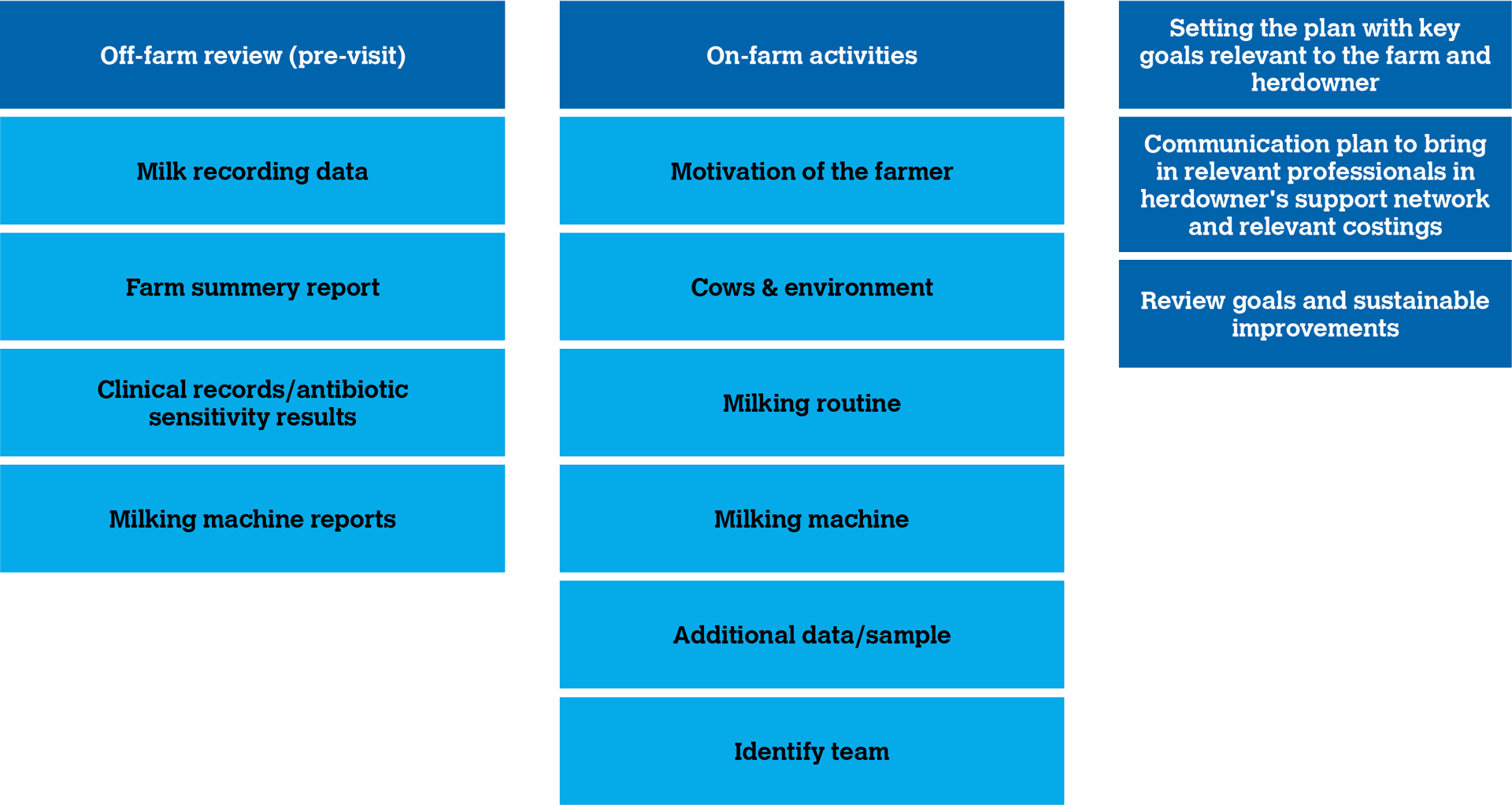
Figure 3. Structure of the TASAH-funded veterinary consult.
Cell Count Solutions consult
The Cell Count Solutions consult is supported by an assessment questionnaire and follows a structure (Figure 3) to assess the herd mastitis situation based on available information and data, and propose some early remedial actions, as well as a detailed action plan, for both further investigation and monitoring of the herd’s mastitis situation. Elements of this consult are desk-based and are recommended to be done pre-visit. Other elements are on-farm and include observing the milking routine, collecting any necessary samples, discussing relevant costings and calculating economic benefits, and collaborating with the herd owner and farm staff to create specific, achievable and time-based goals.
Mastitis can result in significant losses on any farm and when prevalent, it can significantly reduce farm profits. When calculating the true cost of mastitis to farmers, it is easy to include the obvious ones, but the hidden costs have to be considered too. These costs include lost bonuses or penalties, production losses and stress to the farmer. The mastitis CostCheck calculator is a tool that was developed by Teagasc Moorepark and the CellCheck Technical Working Group and allows each dairy farmer to estimate the potential gains in profit from reducing the incidence of mastitis on their dairy farm, using their own data. The CostCheck calculator is a Microsoft Excel based tool which has a user-friendly interface and can be downloaded from the Teagasc and Animal Health Ireland websites.
There are no eligibility criteria for farms to participate in this consult. Farmers will sign up through the AHI website and, wherever possible, it is intended that the consult will be provided by their own trained veterinary practitioner. They will also have the option to identify and connect the additional service providers (milk quality advisor, farm advisor, milking machine technician etc.), who will be supplied with the PVP-farmer agreed action plan post-consult to provide ongoing support to the farmer.
In advance of this consult being rolled out nationally, a pilot version of the consult was delivered in 2022, and the feedback from this has been used to fine-tune the current consult and training. A mixed-methods evaluation of the pilot Cell Count Solutions programme is ongoing. A questionnaire was distributed via Survey Monkey to all participants: PVPs (n=41), milking machine technicians (n=7), milk quality advisors (n=8), and Teagasc advisors (n=8) who had completed the training. Analysis of qualitative data showed that participants responded positively to the multidisciplinary nature of the training and blended learning style, and that they would like further training on the milking machine and communication techniques. Further analysis of the data acquired from Cell Count Solutions consults is planned, to gain a deeper understanding of on-farm practices and uptake of recommendations over time by farmers.
A collaborative approach
Producing high-quality milk is a priority for dairy farmers and milk processors but, to date, farmers have often found the lack of a ‘joined-up’ approach to mastitis control challenging. Equally, many vets have reported difficulties in engaging with their clients on investigating and resolving mastitis issues. Despite significant health and financial consequences of mastitis, many veterinarians are not actively involved in providing advice on mastitis control and have little or no contact with the other service providers that may also influence farmer behaviour. The provision of such herd health planning consults and mastitis problem-solving is an area of opportunity for veterinary practitioners to highlight their role in disease prevention. Together with other on-farm service providers, this collaborative approach that is encouraged in the Cell Count Solutions consult, will improve milk quality on farms, resulting in a move towards improved social, environmental and economic sustainability.
To sign up to Cell Count Solutions training or express your interest in any of our training in animal health programmes or motivational interviewing, please complete the expression of interest form on the AHI website: https://portal.animalhealthireland.ie/traineoi/
1. Which of the following statements is true?
A. The industry target is that by 2025, 80 per cent of milk supplied has an SCC of 200,000 cells/ml or less
b. SCC levels of milk have no effect on milk quality
c. The industry target is that by 2035, 50 per cent of milk supplied has an SCC of 200,000 cells/ml or less
d. The data collected from the milk processors by CellCheck is not anonymised
2. What is the industry target for 2025 relating to milk recording?
A. 75 per cent of herds milk recording
b. 65 per cent of herds milk recording
c. 90 per cent of herds milk recording
d. 50 per cent of herds milk recording
3. Which of the following statements is true:
A. There are no hidden costs with mastitis
b. The mastitis CostCheck calculator is a tool that allows each dairy farmer to estimate the potential gains in profit from reducing the incidence of mastitis on their farms
c. Farmers need to have an SCC of under 200,000 to apply for the Cell Count Solutions consult
d. Cell Count Solutions training is only for veterinary practitioners
4. Which of the following statements is true:
A. Economics alone inform farmer decision making on farm
b. The blended learning style means that the Cell Count Solutions training is both online and in-person
c. Including the farmer in decision making in relation to the necessary recommendations during the consult, is of no benefit
d. Mastitis is not a multifactorial problem and there are plenty of quick fix solutions available
5. Which of the following statements is false:
A. Farmers find the mixed messages they receive from different service providers in relation to mastitis challenging
b. Having veterinary involvement in mastitis problem-solving is an area of opportunity for veterinary practitioners to highlight their role in disease prevention.
c. Together with other on-farm service providers the collaborative approach that is encouraged in the Cell Count Solutions consult, will improve milk quality on farms
d. The Cell Count Solutions consult is entirely desk based
Answers: 1A ; 2C ; 3B ; 4B ; 5D.



